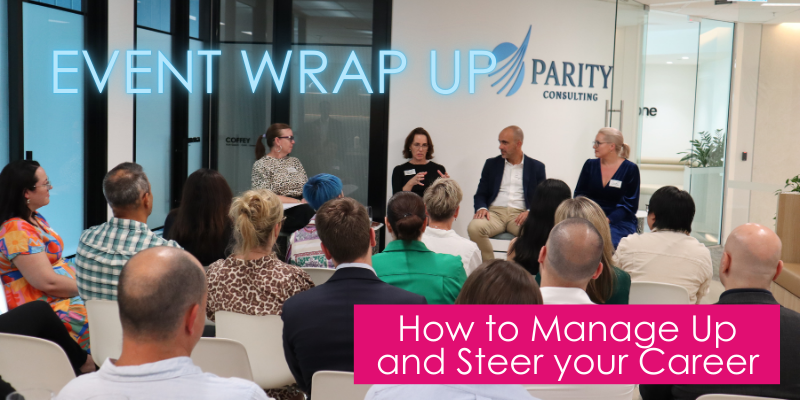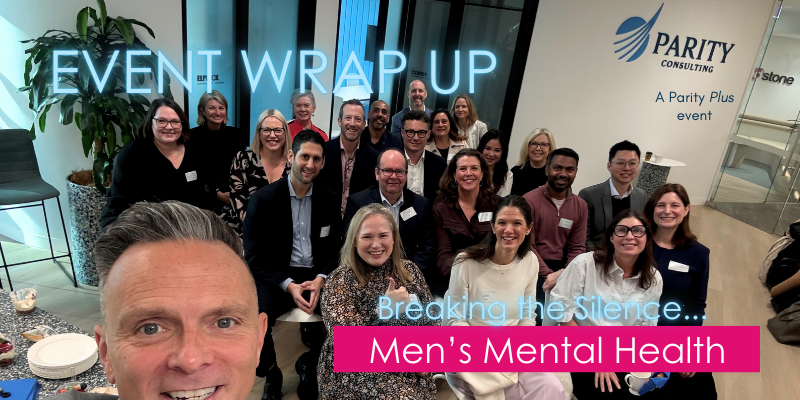
15th October, 2025
Key Takeaways from Personal Branding Event
Hosted by Victoria Butt, Founder & CEO of Parity Consulting
Keynote Speaker: Carlii Lyons, Author of Courage to Be, International Speaker, and Personal Branding Expert
Victoria Butt opened emphasising how job searching has fundamentally changed - personal brand, LinkedIn presence, and referrals have become critical, with acceleration in the past year.
Carlii Lyons has spent two decades shaping the personal brands of world leaders, supermodels like Miranda Kerr, New York Times bestselling authors, and even a British celebrity foot reader. After 15 years running her own PR consultancy, she confronted a harsh reality during extended maternity leave: she'd never built her own personal brand. When she Googled, she was invisible.
1. Personal Brand is Intentional
A personal brand is the way an individual intentionally presents and packages who they are and what they do for a purpose. This is Carlii's core definition.
Personal branding is intentional - if you're wondering what your personal brand is, you don't have one yet. You may have a reputation (which exists whether you shape it or not), but it's not a brand.
2. Two Camps to Avoid
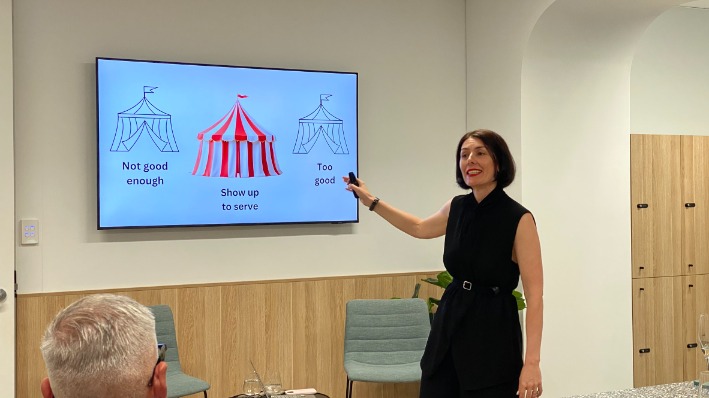
Camp 1: "I'm Not Good Enough" (Waiting for Permission)
People who believe they haven't crossed an invisible threshold where personal branding matters. They think: "I'm not a CEO, I don't have a public profile, so why does my personal brand matter?"
Guest: "I get caught up in my work and I just don't really have time to really think about it."
Carlii's response:
A client in Hong Kong worked 5,200 hours per year. Taking just one hour to work on something that will be an
asset for your career, help streamline relationships, and attract opportunities is essential.
"You need to put it in the diary and make it sacred. It's like the whole exercising thing - 'Oh, I don't have time to work out.' But yet when you do it, you realise you have the time."
Camp 2: "I'm Too Good" (Believing Good Work Speaks for Itself)
People who believe they don't need to worry about personal branding because people will just "know" who they are and what they do.
Guest: "My work will speak for itself... my past roles and what I've done and the people that I know, they know what I do and my value system and my personal brand."
Carlii challenged this using the spotlight effect from psychology:
"We think that people are thinking about us, talking about us, looking at us way more than they actually are." When you walked into the room tonight, you thought everyone was looking at you - but they were all thinking the same thing about themselves. "So even though you think people are thinking about you and they know about you, I would challenge that... most people are focused on themselves."
3. The Right Camp: "Showing Up to Serve"
Visibility leads to possibility.
Key mindset shifts:
If you're able to grow your influence, you're able to have more impact
If people can't see you, hear you, or know who you are, how will you attract the right opportunities?
More importantly: If people can't see you, how are you meant to fill the roles you're perfectly suited for, where you can add value and serve?
When you view personal branding through the lens of service - using your image, likeness, and story to show up and add value - it changes everything.
"Every time you have those moments of visibility, every time you have those moments where you can actually have influence, you realise that it's actually got nothing to do with you, and it's not a form of ego. It is really about adding value."
4. The Four Ps Framework
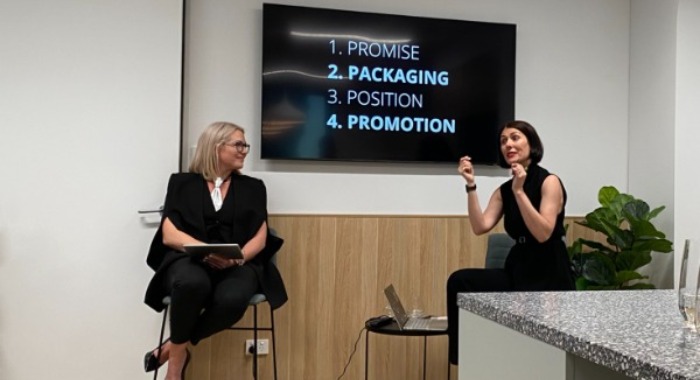
The traditional brand marketing framework work just as well for personal branding:
Promise: Energetic + Intellectual
This is your anchor - what you want to consistently deliver.
Energetic promise: How do you want people to consistently feel when they're in your presence, both online and offline? (Uplifted, safe, inspired?)
Intellectual promise: What do you want them to consistently think about? (That you're an expert in personal branding, marketing, AI, etc.)
Once you have this clarity, everything else becomes easier.
Packaging: Consistent Touchpoints
At every single touchpoint where someone interacts with you, are you showing up and communicating what you want to communicate?
Critical point: If you meet someone in person and then they look you up on LinkedIn, are you going to look ten years younger online? Carlii shared meeting a woman at an event, connecting on LinkedIn, and her body language betrayed her surprise - the woman had full glamour makeup and looked completely different. "That's not cohesive, and it's going to create distrust."
Positioning: Right Rooms, Right People
What rooms do you want to be in? How do you want to be positioning yourself?
Sometimes it's not about doing more - it's about doing what you're already doing, but intentionally.
Examples:
In meetings: If you want to position yourself as an expert in a certain area, bring that up in every meeting where you're visible, even if you think it's not relevant. Find a way to weave it in.
Promotion: Ask for Opportunities
Don't assume people know who you are and what you do. You have to ask for opportunities.
Carlii admitted:
"I was always of that accord: when I'm good enough, I'll be offered the opportunities. You know, when I'm good enough, someone's going to tap me on the shoulder and say, 'Carlii, it's time.' Put yourself out there.' It's not the way it works. That person doesn't exist. You have to actually just do it."
Just like high paid celebrities. "They know if they want something, they have to go out and get it, and yes, they may have the luxury of having someone do it for them. But... it's the same thing. You've got to go and do it."
5. Three Thoughts That Keep You Playing Small
In 2019, Carlii wrote an article on LinkedIn titled "Beware of These Three Thoughts on the Path of Putting Yourself Out There" that went viral (90,000 likes). She discovered that the thoughts keeping her small were the exact same thoughts every single person has - from career starters to executives at the top.
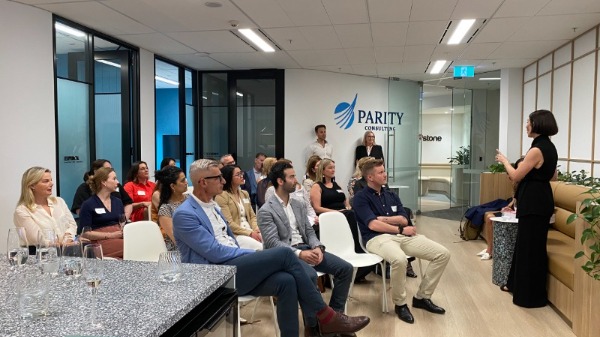
1. "Who Am I to Speak?"
The sense that no one would really care what you have to say.
Example: Carlii worked with a woman at NASA doing groundbreaking work in microgravity - one of the only people on the planet doing what she's doing. Her PhD was so complex Carlii thought she'd need to go to university just to understand it. Yet she was thinking: "But who am I to speak?"
2. "I'm Not Saying Anything New"
People dismiss themselves from sharing ideas because they feel they're not saying anything new.
Audience exercise: Carlii asked the audience to imagine delivering the same keynote, one after another, to 10,000 people. Would the audience respond exactly the same way to each person?
"No" - because of delivery
Because of people's experiences
Because they'll relate to you differently
Because of preconceived biases (a woman saying something reads differently than a man saying it)
"You can say exactly the same thing, but people are going to react to it and respond to it differently. You are actually what makes it different."
The bookcase analogy: Imagine if personal development authors thought, "Someone's already written a book about personal development. I can't do anything new." Imagine what we'd be missing in the world.
3. "Everyone Will Think I'm a W**ker"
The fear of being seen as having a big ego.
Carlii noted:
"In the last seven years that I've been talking about personal branding, I have heard the word 'w**ker' more than I've ever heard it in the 35 years previous to that."
The truth: Everyone is having these thoughts. They're not personal. "When you start to see them as almost like a universal force of resistance... and they come into your mind, if you just don't make them personal, then all of a sudden you have more power."
6. LinkedIn Isn't Optional
We Live in a Digital-First World
Guest: "I'm sitting in the room here. I've never posted in my life. And I don't really want to post because I'm in the W**ker Camp... I just don't feel comfortable and I don't think it's going to mean anything. I'm in a GM or a senior sort of C-suite role. All my careers have come to me via referral, headhunters and things like that. Why do I now feel the urge and the pressure to have a LinkedIn presence and how can I do that without losing my authenticity?"
Carlii's response was direct:
"How many of you are over the age of 40? (Most raised their hands.) We are not digital natives. So we never grew up with social media. It was never a thing. So when somebody over the age of 40 says to me, 'Oh, it's just not me,' I call BS on that. Because the world has changed. And if you want to stay relevant, you have to get on board with where the world is going."
AI says personal branding will become even more relevant because we're having digital-first relationships - meeting people online before meeting them in person. "How many of you have looked up someone on LinkedIn before a meeting?" (Everyone raised their hands.)
You Don't Need to Be an Influencer, But You Need to Control Your Narrative
Carlii posts on LinkedIn once a week, every week. The algorithm tells her she should post three times weekly, or daily to be a "top voice." Her response: "Well, the algorithm can go and have that idea, but that's not going to suit me. It's not going to suit my lifestyle, it's not going to suit my business. But I know I'm going to show up consistently, and that's going to allow me to create a conversation, build a network, just kind of stay there, but it's not my everything."
The key:
"Challenge yourself. It is part of the world we live in now. Doesn't mean you have to become the next LinkedIn influencer... but at least take control of the narrative on your page. Take control of the visual identity."
Profile Photo Matters
Research from UNSW showed: Your profile image has a substantial impact on who wants to work with you, befriend you, date you, party with you, invest in you, etc.
Miranda Kerr's tip for taking photos:
Stop and breathe - this relaxes your body and you'll automatically look better
Look through the lens of the camera as though you're looking at someone you love (platonically for professional photos)
You'll automatically relax, open up, and be the most beautiful or handsome version of yourself
Warning: Don't look like you're seducing on LinkedIn. "I mean, maybe you do. Maybe that will give you an edge that no one else has."
7. The Worst Time to Build Your Brand is When You Need a Job
This point was emphasised multiple times throughout the event.
"You're suddenly in the worst situation you can put yourself in - grappling for an opportunity and nobody knows who you are because you've been so busy doing your job."
The alternative:
"If you just every week spent 15 minutes to an hour, making sure your relationships are current, making sure you're reaching out to people, doing the things you need to do, and you just plod along and it's not about the likes and the vanity metrics, it all builds up over time."
Invest 15 Minutes to an Hour Weekly When You Don't Need It
Victoria reinforced:
"The problem is, this stuff only matters when it matters. So the fact that you've prioritised this time and invested is really great, but I find networking, branding, all of that stuff we don't do when we're busy. We will do it when we need to do it - when we need to find a job or we need to make some changes."
The exercise analogy: It's like saying "I don't have time to work out." But when you do it, you realise you have the time. Put it in the diary and make it sacred.
8. Build Your Bench
Network With People 1-2 Rungs Up, Not Just at Your Level
Victoria introduced the bench strategy:
"How we look at this as headhunters is that you guys need a bench of people one rung up or even two rungs up."
The formula:
5 people one rung above you
5 people two rungs above you
These are your networking priorities
"If you're C-suite, it needs to be the chair of the board. It's not the people at your level, and it's not the people that are potentially junior. Yes, of course you do, but if you are intentional, think about your bench."
This strategy ensures you're building relationships that will open doors as you advance, not just maintaining lateral connections.
9. Authenticity Requires Discipline
Being True to Your Impact Sometimes Means Changing
Carlii referenced Dr. Rebecca Newton's book Authentic Gravitas:
"Authenticity actually requires discipline, because sometimes being authentic to your intention and the impact that you want to have actually means that you have to change."
The key insight: "It's not enough for you to say, 'Oh, but that's just who I've always been. And that's just who I am.' Well, then you're not actually remaining authentic to the impact that you want to have."
Boundaries and Staying Congruent
Everything from a personal branding perspective, you want to have that long-term mindset... you are ultimately putting something out there as a beacon to attract.
Your future aspirations can be woven into your storytelling (like in your LinkedIn "About" section), they dont need to be the centerpiece if it's not your current reality yet.
Important: Your values typically don't change. They can evolve and get clearer, but who you are at your core remains consistent. Keep your values congruent across your journey.
Setting Boundaries
Victoria asked Carlii about boundaries and what's congruent with your brand.
Carlii shared:
"Once you have those answers, that's where I think being clear on your personal brand actually makes everything so much easier because it's a sense of... you will know energetically and quite literally if something's a match and not a match."
Something to Note: "Opportunity begets opportunity. So once you start going down a certain path, you're going to attract more of that, and that's typically when I'll have executives say, 'My career just happened to me, and someone said I'd be good at that, so I did that, and then I got more of that and more of that,' and they go so far down a path they don't want to go."
The payoff: "If you just take the time, you're actually going to save yourself time."
10. Use the Algorithm, Don't Let It Use You
Post With Intention, Not for Metrics
Unless you want to fully play that game and it's about becoming that next LinkedIn influencer... if not, don't focus on the metrics.
What's happening now with AI:
So many more people are on there because they're putting a lot of generic AI content, and so it's becoming easier for them. And they're just feeding into the algorithm... the algorithm wants things that are polarising, it loves things that will create that sort of engagement.
The result: "More people are actually tuning out and switching off."
Carlii's recommendation: "I don't think it's all about, 'Oh, I've just got to go on LinkedIn, and that's my first and last call.' It is also about relationships, it's about networking, it's about how are you showing up in meetings and what are you talking about in those meetings? Are you being intentional?"
Content Strategy: Create or Curate
You don't have to create all original content. Curating powerful content is a great way to post.
Focus on serving and contributing value rather than chasing vanity metrics.
A Guest mentioned the "w**ker" concern with LinkedIn posting. Carlii responded:
"For every one of those people, I will show you another person who's doing it really well and reaping all of the benefits. It's almost like saying, 'Carlii, I've decided not to drive because there are bad drivers on the road.' ...Just because you're on there doesn't automatically put you into that basket. Just don't do what they're doing."
Additional Insights from Q&A
How Do You Know You've Got Your Personal Brand Right?
"There would be a lot to be said about your results. So, what opportunities are you attracting, what conversations are people having... when they're seeing you and they're meeting you."
Two levels of evaluation:
Internal: Are you feeling proud? Does it feel in truth to where you are and what you want to say?
External: What opportunities are you attracting?
Getting feedback: Don't be afraid to ask trusted colleagues, but curate that list of people that you're asking feedback from. Maybe don't make it your spouse or your best friend, because they see you in a particular context. But a trusted leader or advisor or colleague just to get a sense check.
For People in Regulated Industries
A Guest asked about companies with strict compliance around how you show up online.
Carlii's advice:
The first thing is just start a conversation with corporate comms. Ask the question if there's any grey area, because actually what I find is most of the confusion comes from the fact that there aren't clear guardrails and there aren't clear regulations... So if there's any uncertainty and you feel like it's holding you back, just have the conversation.
Don't just focus on LinkedIn:
"I really can't stress enough, when I'm out in the world talking about personal branding, I'm not just talking about your digital online self... It's about relationships, it's about networking, it's about how are you showing up in those meetings and what are you talking about in those meetings?"
Final Practical Takeaways
Start Small
One hour to get clear on your brand
Think of it as an annual checkup - review yearly as priorities evolve
15 minutes to one hour weekly for maintenance
None of This is Set in Concrete
This is not a do it once and then that's it forever...
Check in every year. What is it today? How have I changed? What are my priorities? And make sure you're taking people on the journey and communicating that narrative.
Final Note
Personal branding is not just online - it's every meeting, every interaction
The spotlight effect is real - people are not thinking about you as much as you think
Everyone has the same three thoughts - they're universal, not personal
People who judge you are projecting - it's not about you
Keep your headshot updated - cohesion builds trust
Take control of your narrative - or someone else will
Some feedback from our Guests:
Another great event, thanks for having meVictoria Buttand thanks for sharing your insights,Carlii Lyon. So many valuable takeaways, but one message really stood out to me was the power of being deliberate and consistent in your brand —both intellectually and personally. When these align over time, that’s when true authenticity shines through. Natalie Morcos
Thanks for an insightful event, it was a wonderful evening.
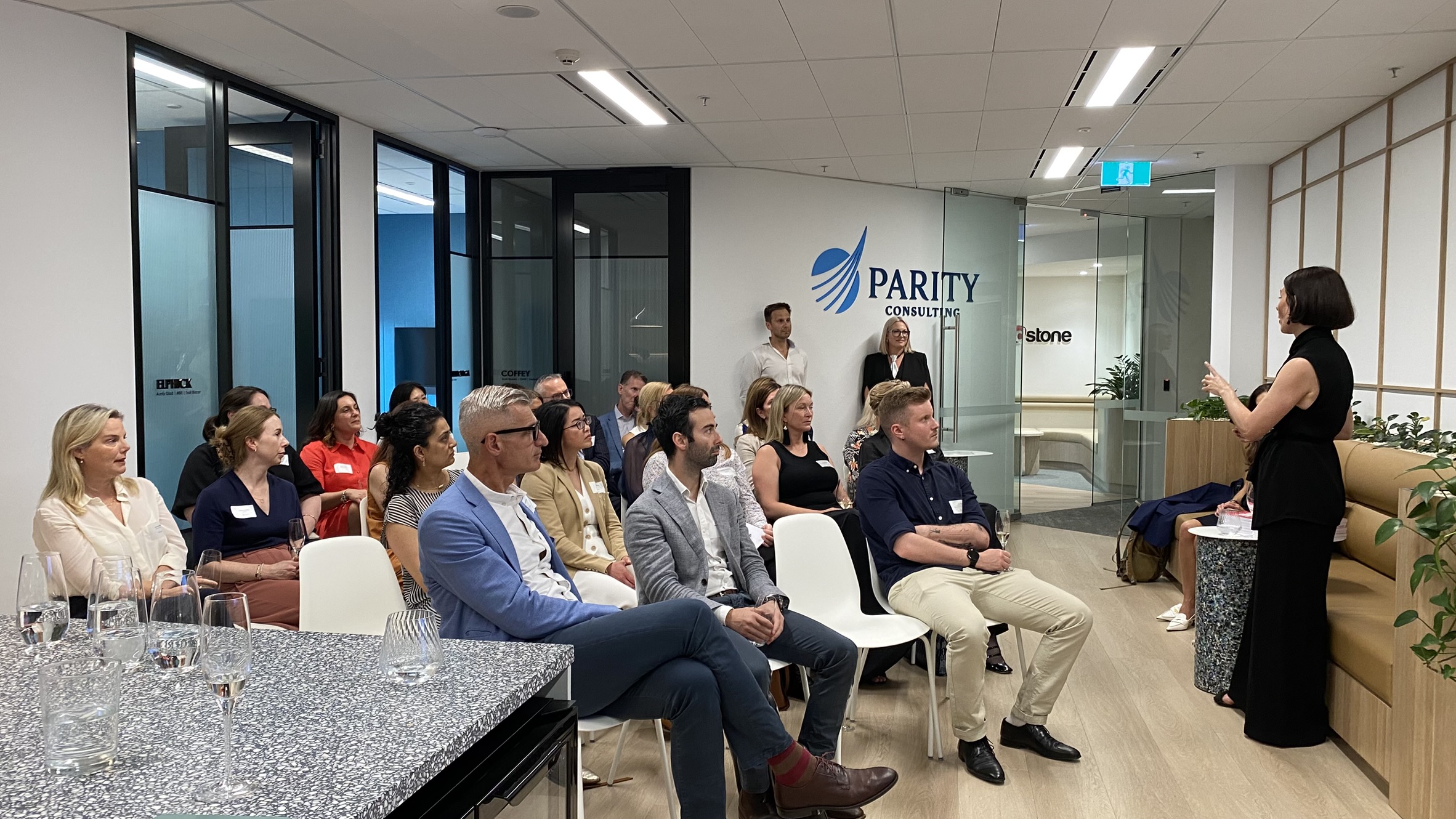
Interested in attending more ParityPlus Events like this? Follow Parity on LinkedIn.

